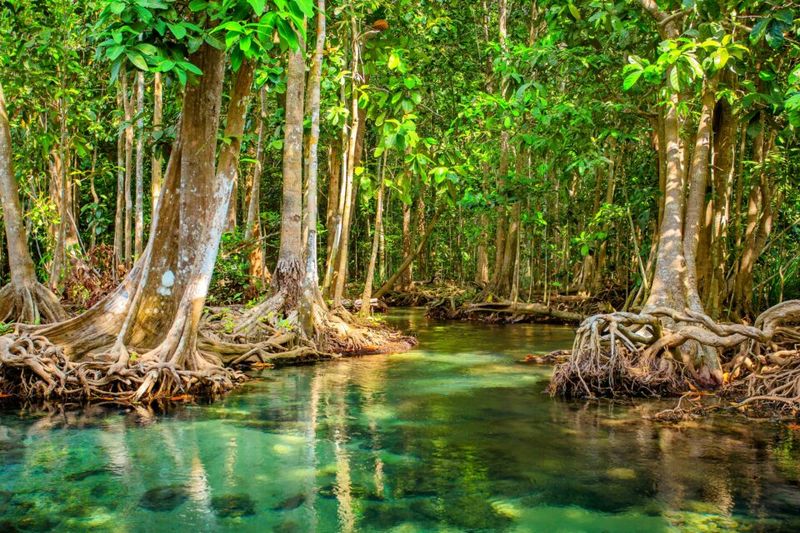
Mangrove forests are instrumental ecosystems for tropical and subtropical coastlines and surrounding communities. Asia holds 42% of the world’s mangrove ecosystems, with 21% being found in Africa, and the remaining 38% dispersed widely through the tropical coastal regions of North, South, and Central America, Australia, and the various islands within Oceania (Earth Observatory 2010). Mangroves not only provide food and habitat for animals, but they are essential for sustaining biodiversity along coastlines, and they secure and trap sediments to reduce the long-term consequences of coastal erosion (Ewel 1998, 84). These terrestrial and aquatic habitats have been shown to adapt to sea level rise over thousands of years because of peat formation and carbonate deposits located alongside the root systems. This, however, has changed drastically due to the influx of ocean temperatures and the rapid sea level rise occurring over the past century (Alongi 2015, 31). Along the coasts of Louisiana, Texas, and southern Florida, seedlings of black mangroves have had difficulties adjusting to rising temperatures and have shown high rates of die-off within 39 and 40-degree celsius water. It is unclear how rising temperatures affect established mangroves and their root systems, but it is believed that water temperatures ranging from 42 and 45 degrees celsius will have limiting effects on growth (Odum et al., 1982).
The concept of vulnerability is arguably impossible to measure because of its subjective nature, but it is undeniable that increased exposure to elements as a result of climate change has made negative impacts on these coastal mangrove ecosystems (Ellison, 2014). Direct human pressures, alongside the impacts of climate change, have led scientists to hypothesize four potential changes that mangrove forests will most likely endure. Due to changing salinity levels, the first prediction states mangrove forests along coastlines will decline as the scarcity of freshwater increases. The second and third predictions state that the forests will decline based on sea level rise, the lack of colonization space inland, and decreases in sediment yields. The final prediction anticipates increased expansion of forest ecosystems throughout a greater latitudinal range in order to adapt to temperatures and salinity changes (Alongi 2015, 35). Overall, mangrove forests are extremely valuable ecosystems, and their protection is required for continual sustainability and long-term health.
Literature Cited:
Alongi, D. M. (2015). The Impact of Climate Change on Mangrove Forests. Current Climate Change
Reports, 1(1), 30–39. https://doi.org/10.1007/s40641-015-0002-x
Earth Observatory. (2010, November 30). Mapping Mangroves by Satellite. NASA Earth
Observatory. https://earthobservatory.nasa.gov/images/47427/mapping-mangroves-by-satellite
Ellison, J. C. (2015). Vulnerability Assessment of Mangroves to Climate Change and Sea-Level Rise
Impacts. Wetlands Ecology and Management, 23(2), 115–137.
https://doi.org/10.1007/s11273-014-9397-8
Ewel, K. C., Twilley, R. R., & Ong, J. E. (1998). Different Kinds of Mangrove Forests Provide Different
Goods and Services. Global Ecology and Biogeography Letters, 7(1), 83–94.
https://doi.org/10.2307/2997700
Odum, W. E., McIvor, C. C., & Smith, T. J. (1982). The Ecology of the Mangroves of South Florida: A
Community Profile. The Service.
